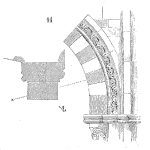
You will find example process diagram layouts with the most effective flowchart templates to use, what to include in them so that the flow chart drives business results and personal performance (and you will be surprised at how easy they are to create). With the right layout and the inclusion of ACE 3T (Target-Tolerance-Test) quality assurance standards your process flowcharts and procedures will drive business and workplace performance. First it is necessary to layout your flowcharts so it is totally clear what must happen in a process or procedure, who is responsible to make it happen, and how their performance will be measured.
Keywords: process flow chart template, process flow diagram, business process modelling
In many ISO 9001 quality systems one often finds that no one in management or the shopfloor read their business process descriptions, job procedures, or work instructions. When that happens, we introduce them to a simple solution: we turn their unread documents into easy-to-follow flowcharts.
Do not write what you can show people. They will not understand what you describe, and you surely will bore them with too much monotonous, dull text. For example, instead of me describing how to create fantastic process flow charts, just look at the three accompanying example flow diagrams to see their content and get the gist of the technique. Look at the flow diagram layouts and you will ‘get it’ in about 30 seconds. Had I written and described what you needed to do, you would never ‘get it’ at all—no matter how often you reread the work instruction.
How to Get the Performance You Want
It is vital that you tell users of process, procedure and work instruction flow chart what the acceptable job performance is by putting one, and up to four, measurable performance indicators in every step.
Target is the perfect outcome. Tolerance is the worst outcome acceptable. Test is how you check what is actually happening.
Use the flowchart to communicate to the reader the procedural task quality and the details needed at each step, including what forms to complete and what work instructions to follow when necessary.
The very best to you,
Mike Sondalini




Leave a Reply